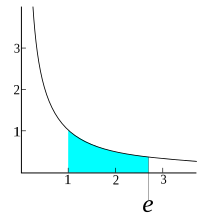
Outcome after transcatheter occlusion of patent ductus arteriosus in infants less than 6 kg: A national study from United Kingdom and Ireland
Sign Up to like & getrecommendations! Published in 2017 at "Catheterization and Cardiovascular Interventions"
DOI: 10.1002/ccd.27212
Abstract: This study aimed to report our national experience with transcatheter patent ductus arteriosus (PDA) occlusion in infants weighing read more here.
Keywords: patent ductus; ductus arteriosus; study;

Compression of the left mainstem bronchus by patent ductus arteriosus in neonates under consideration for ductal stenting
Sign Up to like & getrecommendations! Published in 2020 at "Catheterization and Cardiovascular Interventions"
DOI: 10.1002/ccd.28735
Abstract: Stent angioplasty of patent ductus arteriosus has been shown to be a viable alternative to operative shunt placement in cyanotic neonates. With broader implementation of this strategy, novel complications are bound to arise. We present… read more here.
Keywords: patent ductus; left mainstem; mainstem bronchus; ductal stenting ... See more keywords

Use of the Medtronic Microvascular Plug 7Q for transcatheter closure of large patent ductus arteriosus in infants weighing less than 2.5 kg
Sign Up to like & getrecommendations! Published in 2022 at "Catheterization and Cardiovascular Interventions"
DOI: 10.1002/ccd.30105
Abstract: The sole Food and Drug Administration‐approved device for transcatheter closure of the patent arterial duct in premature infants is indicated for patent ductus arteriosus (PDAs) ≤ 4 mm in diameter. We report a two‐center experience with transcatheter closure… read more here.
Keywords: ductus arteriosus; transcatheter; transcatheter closure; patent ductus ... See more keywords

A simple noninvasive biomarker can reflect both the acute and chronic pulmonary impact of patent ductus arteriosus shunting
Sign Up to like & getrecommendations! Published in 2022 at "Pediatric Pulmonology"
DOI: 10.1002/ppul.25880
Abstract: The SFR (SpO2/FiO2 ratio) offers a continuous, noninvasive reflection of pulmonary function regardless of whether the baby is ventilated or breathing spontaneously. We hypothesized that significant patent ductus arteriosus (PDA) shunting would impair pulmonary oxygen… read more here.
Keywords: ductus arteriosus; patent ductus; simple noninvasive; noninvasive biomarker ... See more keywords

Surgical ligation, not transcatheter closure, associated with a higher severity of bronchopulmonary dysplasia in extremely preterm infant intervened for patent ductus arteriosus
Sign Up to like & getrecommendations! Published in 2023 at "Pediatric Pulmonology"
DOI: 10.1002/ppul.26325
Abstract: Patent ductus arteriosus (PDA) is a common complication among premature infants, which may be responsible for prematurity‐related complications such as bronchopulmonary dysplasia (BPD). It is unclear whether different interventional methods contribute to the severity of… read more here.
Keywords: patent ductus; surgical ligation; transcatheter closure; ductus arteriosus ... See more keywords

Ductus arteriosus flow predicts outcome in neonates with congenital diaphragmatic hernia
Sign Up to like & getrecommendations! Published in 2023 at "Pediatric Pulmonology"
DOI: 10.1002/ppul.26385
Abstract: To investigate whether the pattern of flow through the ductus arteriosus (DA) is associated with the need for extracorporeal membrane oxygenation support (ECMO) or death in neonates with congenital diaphragmatic hernia (CDH). read more here.
Keywords: ductus arteriosus; neonates congenital; diaphragmatic hernia; congenital diaphragmatic ... See more keywords

Maternal paracetamol intake and fetal ductus arteriosus constriction/closure: comprehensive signal evaluation using the Austin Bradford Hill criteria.
Sign Up to like & getrecommendations! Published in 2021 at "European journal of clinical pharmacology"
DOI: 10.1007/s00228-020-03039-z
Abstract: PURPOSE Acetaminophen (APAP) is available over-the-counter and widely regarded as safe for use in pregnancy. APAP has been used to close a persistently patent ductus arteriosus. Fetal constriction/closure of the ductus arteriosus (FCCDA), of public… read more here.
Keywords: constriction closure; pharmacology; apap; ductus arteriosus ... See more keywords

Fate of the Left Pulmonary Artery and Thoracic Aorta After Transcatheter Patent Ductus Arteriosus Closure in Low Birth Weight Premature Infants
Sign Up to like & getrecommendations! Published in 2021 at "Pediatric Cardiology"
DOI: 10.1007/s00246-020-02523-8
Abstract: Transcatheter patent ductus arteriosus closure (TCPC) is an emerging treatment for low birth weight extremely premature neonates (EPNs). Left pulmonary artery (LPA) and descending aorta (DAO) obstruction are described device-related complications, however, data on mid-… read more here.
Keywords: patent ductus; weight; arteriosus closure; transcatheter patent ... See more keywords

Ductus Arteriosus of Extremely Preterm Twins is More Resistant to Cyclooxygenase Inhibitors Than Those of Singletons
Sign Up to like & getrecommendations! Published in 2021 at "Pediatric Cardiology"
DOI: 10.1007/s00246-021-02765-0
Abstract: Symptomatic patent ductus arteriosus (sPDA) is common among preterm infants, and can lead to several complications. This is particularly true for extremely preterm infants, as closure of the ductus arteriosus using cyclooxygenase inhibitors is often… read more here.
Keywords: extremely preterm; ductus arteriosus; arteriosus extremely; cyclooxygenase inhibitors ... See more keywords

Patent ductus arteriosus closure and somatic regional oxyhemoglobin saturation
Sign Up to like & getrecommendations! Published in 2018 at "Journal of Clinical Monitoring and Computing"
DOI: 10.1007/s10877-018-0184-6
Abstract: The authors report a case of a 14-day-old infant patient with patent ductus arteriosus (PDA) with pulmonary hypertension. Accidental clipping of the left pulmonary artery (LPA) during intended PDA closure was revealed, and subsequent urgent… read more here.
Keywords: patent ductus; closure; oxyhemoglobin saturation; somatic regional ... See more keywords

Severe Pulmonary Arteriopathy in a Neonate with Congenital Rubella Syndrome and Patent Ductus Arteriosus
Sign Up to like & getrecommendations! Published in 2019 at "Indian Pediatrics"
DOI: 10.1007/s13312-019-1614-3
Abstract: Neonates with congenital rubella syndrome (CRS) are known to have associated congenital cardiac malformations. Patent ductus arteriosus (PDA) is one the most common cardiac anomalies associated with CRS. PDA refractory to medical management and associated… read more here.
Keywords: patent ductus; congenital rubella; severe pulmonary; rubella syndrome ... See more keywords